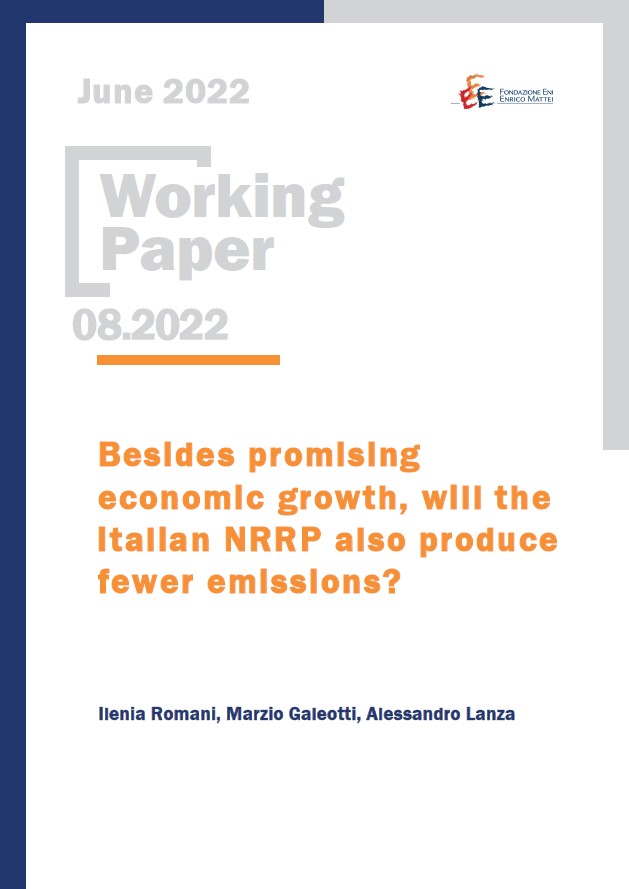Besides promising economic growth, will the Italian NRRP also produce fewer emissions?

25.02.2022
Ilenia Romani (Università degli Studi di Brescia and Fondazione Eni Enrico Mattei); Marzio Galeotti (Università degli Studi di Milano and Fondazione Eni Enrico Mattei); Alessandro Lanza (LUISS and Fondazione Eni Enrico Mattei)
E37, E61, E62, Q43, Q54, C30
National Recovery and Resilience Plan, CO2 emissions, large-scale macroeconomic model, post-Covid recovery
The funds allocated by the National Recovery and Resilience Plan (NRRP) aim to trigger a multiplier effect on GDP as they are designed to help the recovery after the Covid-19 pandemic. The GDP increase is in turn expected to drive energy consumption up which will increase CO2 emissions, given that fossil fuels still account for 79% of the Italian total primary energy consumption. At the same time, as the NRRPs are part of the EU Green Deal, an important share of the Plan’s investments is aimed at facilitating the green transition, with expected favorable effects on emissions. Which one of these two effects will prevail remains to be ascertained. In this study we have used the GEM (Global Economic Model) by Oxford Economics to build a number of scenarios and generate the relevant simulations aimed at assessing the impact of the Italian NRRP’s interventions on energy consumption and CO2 emissions. To validate the use of GEM we extensively considered the macroeconomic impact on GDP and unemployment rate generated by the model and compare the results to those presented by other institutions and obtained using different models. The results show that when the green investments of the NRRP display their effects, there are climatic benefits in terms of reduced emissions. Compared to the implementation of the NRRP in 2021, however, the reduction in emissions by 2030 is modest and equal to 5%. As those investments largely refer to the adoption of clean technologies, the climate benefits are likely to be more substantial only in subsequent years and over longer horizons.
(Update: June 2022)
***
Suggested citation: I. Romani, M. Galeotti, A. Lanza, (2022), ‘Besides promising economic growth, will the Italian NRRP also produce fewer emissions?’, Nota di Lavoro 08.2022, Milano, Italy: Fondazione Eni Enrico Mattei
